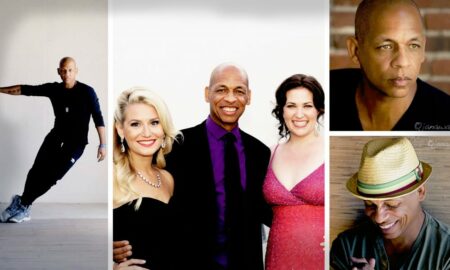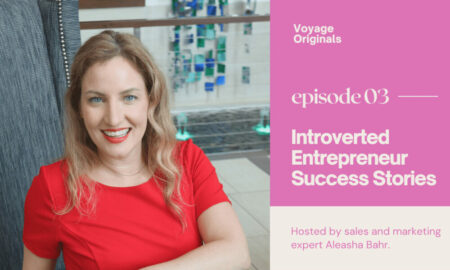

Today we’d like to introduce you to Sakshi Gupta.
Hi Sakshi, it’s an honor to have you on the platform. Thanks for taking the time to share your story with us – to start maybe you can share some of your backstory with our readers?
I grew up in a misty hill town in Uttarakhand where the biggest adventure, most days, was waiting for the internet to connect. My parents—loving, practical, and very Indian—had one request: “Be an engineer, beta.” So I signed the unspoken contract and enrolled in a three‑year diploma in computer science before most classmates had even chosen their 12th‑grade subjects.
The diploma felt like being handed a backstage pass to tech. While my friends revised calculus, I was writing code for a tiny software firm and learning how caffeine can replace sleep. By the time I dove into a B.Tech. at Pantnagar University, the startup bug had bitten hard. In third year an ed‑tech founder spotted my “sure‑let’s‑try‑it” attitude and turned me loose as a growth strategist. I spent twelve months experimenting with A/B tests, marketing funnels, and the art of persuading strangers on the internet—less glamorous than it sounds, but ridiculously addictive.
After graduation I joined Accenture as a Salesforce developer. A year later, thanks to teammates who wouldn’t stop tossing me “bigger‑picture” problems, I was promoted to business analyst. Translation: I learned to talk fluent “engineer” on Monday and fluent “executive” by Tuesday.
Still, a whisper kept nagging: There’s a bigger world out there—go see it. Studying abroad felt impossible until a close friend called with news of a fully funded admit in the U.S. “Assistantships pay your tuition,” he said, as casually as if everyone knew. Spoiler: I didn’t. But the idea stuck.
Cue the montage: late‑night TOEFL sessions, spreadsheets of scholarship‑friendly universities, cold emails to professors, visa forms multiplying like gremlins. One evening, certain I’d done everything humanly possible, I told my parents I wanted to try for the U.S. They blinked, asked if I was ready to live alone on the far side of the planet, and—when I said yes—simply replied, “Then go.”
Months passed in radio silence. Then, one humid Delhi afternoon, an email pinged: Congratulations, full assistantship. I burst into tears in the back seat of a cab, much to the driver’s confusion. Visa in hand by June, suitcase packed by August, I landed in Atlanta on the 9th—equal parts elated and terrified.
Reality set in fast: new currency, new grocery brands, weather that couldn’t decide between blazing sun and Arctic blast. Mid‑semester I realised my Information Systems program wasn’t my north star, so I leapt into an MBA instead. Between classes I worked as a research assistant, networked like my rent depended on it (because it did), and accepted every invitation that might teach me something.
The hustle paid off: a Product Manager internship first, and in January 2025 a full‑time offer as a Product Marketing Manager in New York City—storytelling at the intersection of tech and business, exactly where I’d hoped to land.
Looking back, the plot twists—diploma detours, midnight study sessions, weepy cab rides—shape the person typing this today. And if there’s a moral, it’s simple: Believe in your dreams, even if they seem impossible. Stay curious, say yes before you feel ready, and never underestimate the power of a well‑timed YouTube tutorial.
Alright, so let’s dig a little deeper into the story – has it been an easy path overall and if not, what were the challenges you’ve had to overcome?
Smooth? Ha—more like a mountain trail with the occasional landslide.
First, a quick disclaimer: I honestly believe nobody’s road is “easy.” From the outside it can look like people just glide from milestone to milestone, but zoom in and you’ll see the scraped knees. Mine are right there, trust me.
The Pre‑Flight Chaos
Convincing my parents was actually the breeziest part. They didn’t even know where Atlanta sat on a world map, but the minute I said “full assistantship,” they were out on the balcony dancing with me.
The hard stuff was everything between that popping the question to them, then dance and the plane ticket:
DIY Admissions Advisor: No cousins abroad, no paid consultants—just me, YouTube deep‑dives, and cold‑messaging strangers on LinkedIn at 2 a.m.
Paperwork Olympics: Figuring out which transcript copy needed a stamp, which bank letter had the right wording, and how to schedule a visa slot that vanished faster than concert tickets.
Sheer Doubt: More than once I sat staring at a half‑filled form wondering, “Who do I think I am, anyway?”
Touchdown & Culture Shock
Arriving at 23 felt like being reborn—only this time the hospital was Hartsfield‑Jackson Airport and nobody handed me a manual.
Zero Network: Every face was new; every system—banking, housing, even grocery shopping—had its own hidden rules.
Academic Whiplash: I switched programs mid‑semester, which meant scrapping a study plan I’d already sold to my parents and starting from scratch.
Balancing Act: Juggling a research assistantship, networking events, rent, and an existential freak‑out or two. Think full‑time Tetris with no cheat codes.
The Good Kind of Heat
One of my mentor likes to say, “Gold only shines after the smelting.” Those first eighteen months were my furnace: long nights, rejected job apps, snow that felt personal. But every one of those “roasting” moments hammered in a new skill or thickened the skin I needed for the next step.
So, no—nothing about this road was smooth. But the potholes, the paperwork migraines, the grocery‑store panic attacks? They’re exactly why I can navigate new challenges now without flinching. And if you catch me dancing on another balcony someday, just know the music is turned up loud enough to drown out the blister stories underneath.
Appreciate you sharing that. What else should we know about what you do?
Think of me as the friendly translator who sits between brilliant engineers and busy customers.
What I do
I’m a Product Marketing Manager. My day starts with questions like, “Who really needs this feature?” and ends with, “Does our homepage explain that in plain English?” I map out go‑to‑market plans, shape the story, and make sure every launch—whether it’s a tiny feature or a brand‑new product—lands in front of the right people with the right message.
My sweet spot
Tech roots: I wrote my first production code before most friends finished high school, so API docs don’t scare me.
Business brain: An MBA taught me to frame those tech details in terms executives (and budgets) care about.
Put them together and you get someone who can debug an integration call at 10 a.m. and craft a pricing pitch by noon.
What I’m known for
Finding the real problem. I interview users until the “aha” clicks, then build messaging frameworks that sales teams steal for their decks.
Data‑backed storytelling. A/B tests, usage dashboards, win‑loss calls—if it isn’t measured, it isn’t trusted.
Making launches feel easy. From positioning docs to enablement kits, I drop the friction so cross‑functional teams can just… ship.
Moments I’m proud of
Ed‑tech growth hack: Re‑wrote onboarding emails that moved free‑to‑paid conversions up 26 points—a metric the CFO still cites.
AI platform re‑price: Competitive analysis uncovered a sweet spot; tweaking tiers lifted average deal size 18 %.
600‑use‑case landing page: Built a dynamic, AI‑driven page that personalizes content on the fly, sparing designers 600 separate mockups.
What sets me apart
Plenty of PMMs can craft slick messaging. Fewer are comfortable jumping into the code editor, or whiteboarding database flow with engineers, or translating that same diagram into a one‑minute pitch a CEO can use on CNBC. That “tech‑to‑business bilingual” skill is my edge—and the part of the job I love most.
Do you have any advice for those looking to network or find a mentor?
How I’ve turned strangers into mentors (and how you can, too)
1. Lead with a tiny, specific ask.
I never message, “Can I pick your brain?” Instead I say, “I saw you revamped XYZ’s pricing page—could you spare one short tip on how you validated the tiers?”
Specificity shows respect for their time and makes it easy to say yes.
2. Give before you take.
Share a relevant article, offer to beta‑test a feature, or catch a typo on their slide deck. Even small value flips the dynamic from “help me” to “let’s trade notes.”
3. Show you’ve done the homework.
Before I hopped on a call with a PMM at a dream company, I skimmed their last three launch posts and arrived with follow‑up questions. That prep turned a 15‑minute chat into an open invitation to ping anytime.
4. Use the “one‑layer‑up” trick.
Don’t aim straight for the celebrity CMO. Start with someone one step ahead of you—say, a senior PMM who remembers your exact struggles. They’re flattered, more available, and often open doors upward later.
5. Turn one‑off calls into ongoing threads.
After a helpful conversation, I send a quick note: “Tried your suggestion—here’s the result (screenshot). Thank you!” People love seeing their advice in action, and that follow‑up naturally leads to the next chat.
6. Join rooms where you can contribute, not just consume.
Slack communities, local meetups, even Twitter Spaces—if I can answer someone else’s question, I do. Helping publicly builds credibility faster than any cold DM.
7. Schedule “relationship maintenance.”
Once a month, I scroll through my contacts, pick two people I haven’t spoken to in a while, and send a short update or article. It keeps connections warm without feeling transactional.
8. Accept that “no reply” is normal.
Roughly half my cold messages vanish into the void. I don’t take it personally; I tweak the note, try someone else, and keep moving.
Bottom line: Mentorship is less about finding a single wise guru and more about weaving a web of generous people who each nudge you a step forward. Start small, give value first, follow up with results—do that on repeat, and the network builds itself.
Contact Info:
- Website: https://www.mypmpath.com/
- LinkedIn: https://www.linkedin.com/in/sakshi2711/
- Other: https://topmate.io/gupta_sakshi
















